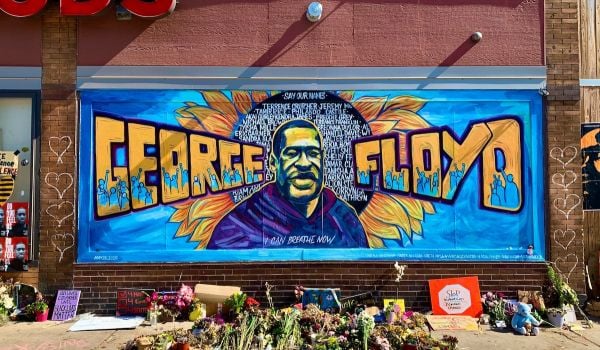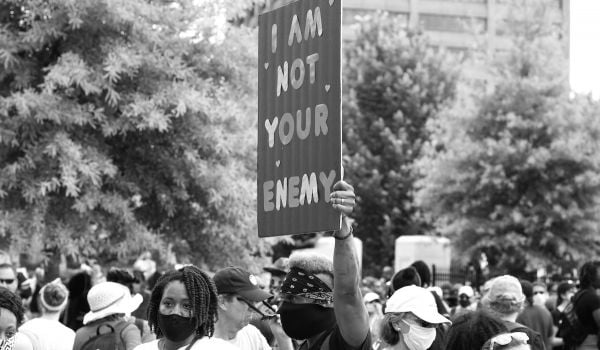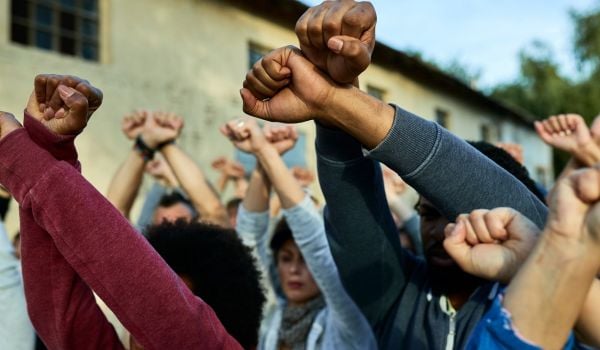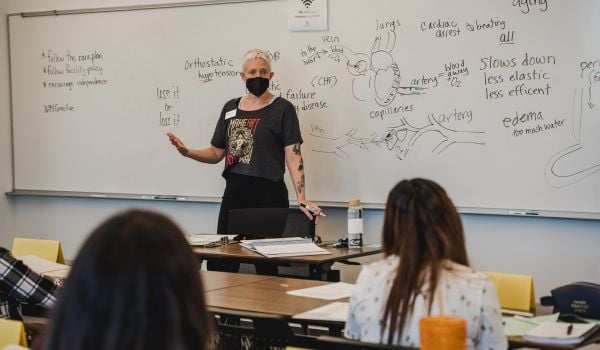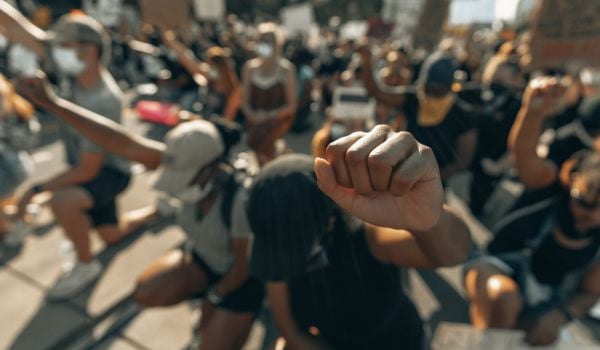Five days after the 2020 murder of George Floyd, the Minneapolis Police Department’s SWAT unit drove down Lake Street, the corridor at the heart of the civil unrest that followed. “The first f***ers we see, we’re just hammering ‘em with 40s,” Sgt. Andrew Bittell ordered his team, referring to the 40mm plastic projectiles otherwise known as rubber bullets.
Around 11 p.m., that’s exactly what the squad did to a group of people in a Lake Street parking lot. Some of the plastic rounds they fired hit Jaleel Stallings. Stallings, an army veteran, returned fire with a permitted pistol at the unmarked van he thought was dispensing real bullets. When he realized they were police, he dropped the gun and lay face down on the pavement. Police claimed he resisted arrest, fracturing Stallings’ eye socket in the beating that followed.
Months after Stallings was acquitted of any wrongdoing, the city agreed to pay Stallings $1.5 million plus attorneys’ fees in a settlement.
That’s a drop in the bucket of recent police misconduct payouts in the city. In the case of George Floyd, Minneapolis agreed to a $27 million settlement. In 2019, the city paid $20 million to the family of Justine Ruszczyk after an officer fatally shot her while responding to her 911 call. In August of the same year, Minneapolis agreed to pay $200,000 to the family of Jamar Clark after police shot and killed him in 2015.
Despite the prevalence of taxpayer-funded payouts for police misconduct incidents like these, tracking and reporting of the sums paid are few and far between.
In the wake of George Floyd’s murder, “quite a few people, including reporters, asked me how much money was being paid out as a result of police misconduct,” recalls David Schultz, a political science professor at St. Paul’s Hamline University. “The answer I gave to everyone was that’s a really good question. Because we don’t have any database for this.”
While Minneapolis stands out as a rare city that does offer a public dashboard tracking the sums of officer payouts, across municipalities and “at any state in the country, nobody had been compiling this information,” Schultz says. “So I decided it would be a really interesting project to see if we could come up with some type of an estimate.”
With roughly $2,000 in funding from St. Paul nonprofit organization Public Record Media and Hamline’s political science department and dean’s office, that’s exactly what he and a small team of undergraduate researchers did in a report released in June.
Schultz’s team found that more than $60 million has been paid by Minnesota cities and counties for 495 cases of police misconduct between 2010 and 2020. (Because the $27 million payout to Floyd’s family happened in 2021, it wasn’t included in the more than $36 million paid across 177 incidents that Minneapolis contributed to the total.)
“The whole premise, originally starting back in the 1970s and 80s for why cities should be financially responsible in civil rights disputes for the police was if cities or governments had to keep writing checks, at some point they would get tired of writing checks and do something else,” Schultz says. “But if the check writing process is working, it just becomes the cost of doing business.”
Not only does the report shine a light on the extent to which taxpayer money in Minnesota is spent on police misconduct, it lays out a process that can be duplicated in other cities and states while highlighting how much we still don’t know.
“The insights about the number of claims that are in the larger cities compared to the smaller jurisdictions is really interesting and valuable,” explains Joanna Schwartz, a UCLA law professor who studies police accountability. “To take full advantage of lawsuits, information and really thinking about next steps forward, you have to look beyond the number of claims and the amount paid in the cases and understand what claims were filed, what the allegations were, and what information came out in discovery.”
It’s through these additional details that both Schwartz and Schultz say patterns and trends across instances of police misconduct can be identified. From there, we can begin to better understand whether or not certain police officers or precincts are repeat or extreme offenders and uncover the extent to which elements like gender, race and immigration status factor into misconduct cases.
As long as government entities don’t voluntarily track (and aren’t required to track) this information, “the only way you can access it is through the painstaking work of the kinds of public records requests they did,” Schwartz says.
Uncovering the sums paid out was no small feat. Not only are there few if any public databases, but several municipalities and counties didn’t have or weren’t tracking the information at all. And if they were tracking it, many of the officials Schultz spoke to while carrying out the 239 public records requests to compile the report weren’t sure of where, exactly, to find the information or who, exactly, was responsible for it.
Schultz estimates that roughly half of the entities queried responded initially; for the other half, the team had to send follow-up letters. In the end, it took Schutlz’s team about two years to gather all of the information they needed.
“It was an incredibly labor-intensive process,” he says, but an important one.

Cinnamon Janzer is a freelance journalist based in Minneapolis. Her work has appeared in National Geographic, U.S. News & World Report, Rewire.news, and more. She holds an MA in Social Design, with a specialization in intervention design, from the Maryland Institute College of Art and a BA in Cultural Anthropology and Fine Art from the University of Minnesota, Twin Cities.
Follow Cinnamon .(JavaScript must be enabled to view this email address)


